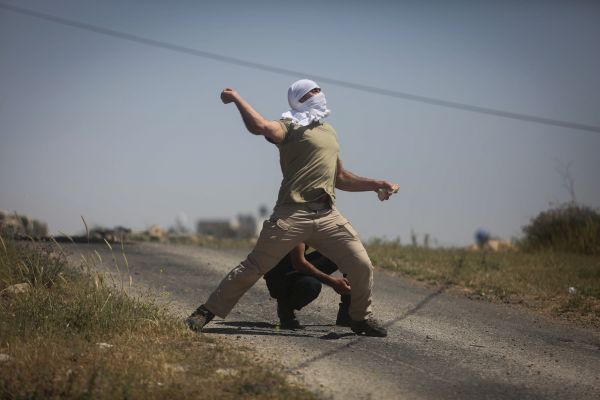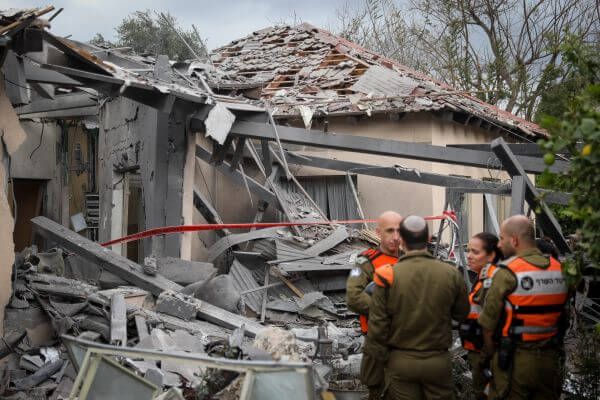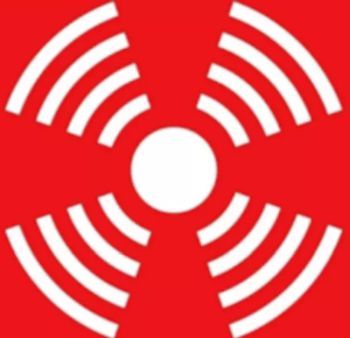For years watching news coverage of the Israeli-Palestinian conflict on Australian television, I would be left frustrated. As a journalist, I was familiar with the popular trope: “If it bleeds it leads,” which often results in skewed headlines and the dissemination of misleading information.
As such, in this context, graphic imagery and disproportionate death tolls inform public opinion about an extraordinarily complex and layered reality.
Consuming the news some 12,000 kilometers away, the general takeaway showed Israel as the aggressor against a disenfranchised Palestinian population.
Having previously spent time in Israel, I knew there was a much broader reality.
As I saw it, the way that the Israeli-Palestinian conflict was presented in the mainstream media, seemed to show a lack of a deeper understanding of the situation. I was compelled to delve into why such incomplete narratives are broadcast to international audiences.
Was it media bias? Or was something else going on?
This, in part, prompted me to begin reporting from Israel. But, even after spending an extended time in what amounts to a conflict zone, I realized that even for a keen and dedicated mind, there are already inherent challenges and limitations by virtue of the nature of the industry and the conflict itself. The layers run deep, the zeitgeist is complex and it’s difficult to paint a complete picture to foreign audiences, given the constraints and time-sensitive nature of modern journalism, coupled with a public that often receives its “news” in 280-characters.
Join the fight for Israel’s fair coverage in the news
1. The Western mentality applied to the conflict
My first revelation was that one can’t expect a democracy in the Middle East to function in accordance with Western ideals. The complicated realities facing a country like Israel, surrounded by unrelenting enemies and ‘frenemies’, changes the game and therefore we cannot employ a Western mindset when analyzing news events here – the context is simply incomparable.
For example, I remember covering a story a few weeks into my tenure at an Israeli-based international news network, in which Palestinian youths had thrown rocks at vehicles along Route 60 – a major highway in Israel stretching from Jerusalem to Beersheba that crosses into the West Bank.
The Israeli army was immediately called into action and, in the process of tracking down the perpetrators, a 15-year-old Palestinian was shot dead. Based on my experience, this seemed unwarranted, constituting an abuse of power and disregard for human life.
What immediately came to mind was a story I covered about young Australian teens throwing rocks from a highway overpass – it was inconceivable to me that local police could have gone any further than arresting the bunch of “hooligans.” Ordering in the Australian military was unthinkable.
I therefore took it upon myself to speak directly with an Israeli defense correspondent, an expert on the Israeli-Palestinian conflict. He failed to see the gravity of the West Bank incident, which, when further explained, made clear to me the pitfalls of trying to understand what one does not experience daily.

What the correspondent told me was that the accused Palestinians were not merely disruptive teenagers doing disruptive teenager things, but, rather, that they had intended to kill Israeli commuters. Rocks, in this case, were deadly weapons – just one device in a string of others (like Molotov cocktails and gunfire) commonly used by Palestinians in previous attacks in the same area. In this respect, after more digging, I became aware that in the preceding eight months at least five Israeli civilians had been killed along that same 16-kilometer stretch of Route 60. I now understood that this was not an isolated incident but part and parcel of the conflict – it was not a crime but an act of war.
Accordingly, framing the story as “Israel Kills Palestinian Rock-thrower” entirely excludes the crux of the matter and it takes a committed journalist to eliminate the confusion.
Related reading: Defining Bias: Lack of Context
2. Context alleviates confusion
The “who was here first” and “who took what from whom” debate dates to the 1920s and cannot be adequately conveyed in a one-minute sound bite. Providing the necessary historical context to a modern-day incident is often impossible, given the constraints of broadcast news reporting; governed by word-economy and time limitations. Herein lies the challenge, because the appropriate context allows an individual to more fully conceptualize current events. It provides depth, independent of which leads to misinterpretations.
While both Israelis and Palestinian have made their fair share of mistakes, context is important when trying to understand the actions of each side. One cannot underestimate the impact, for example, on the Israeli psyche of years of Palestinian terrorism. Nor can one proclaim to walk in the footsteps of an Israeli southerner targeted by thousands upon thousands of rocket attacks by Hamas, which, for that matter, began after Israel unilaterally vacated Gaza in 2005. This isn’t to say that all of these residents share the same view of the conflict either. Some who live on the front lines of the conflict are staunchly left wing – others are far more hawkish – also something that context would provide.
Moreover, often lost in the equation is that Israel has over the past two decades offered multiple comprehensive peace proposals to the Palestinian Authority, which rejected each one.
For their part, Palestinians remain subjected to Israeli military rule in parts of the West Bank inhabited by some 500,000 Jews. This reduces economic growth opportunities, restricts freedom of movement, has caused the separation of families and, in the case of Gaza, the Hamas ideology has prompted Israel and Egypt to impose a blockade on the coastal enclave.
Therefore, while both sides have grievances, it is impossible to convey the full context in a few sentences, which has become the standard format for broadcast journalism. This, in turn, accounts for why audiences are often left without the whole story.
Related reading: How Reporting From Israel Changed My Worldview Forever
3. Imagery doesn’t always convey truth
In broadcast media, pictures rule and can often muddy the narrative. The more compelling the pictures, the more airtime they receive, and the images can also overshadow the mitigating factor for violence.
On a recent visit to Bali, I directly experienced how photography and video can determine how people interpret a story. Speaking with a highly educated and accomplished Australian woman about the conflict, she expressed sympathy for Gazans, citing Israel’s military superiority as the reason. “The Palestinians only have rocks to fight against Israeli tanks and aircraft,” she claimed. This perspective is shared by many Westerners due to the power of imagery alone to shape opinions.
I asked what she knew about the 700 rockets fired at Israel the prior week, resulting in Israeli fatalities. She was shocked to know nothing about rockets and Israeli casualties. Even though, at times, Hamas rockets are launched relentlessly, most of them are intercepted by advanced Israeli defense systems, most notably the Iron Dome – which, by happenstance, has saved hundreds, if not thousands, of Palestinian lives by significantly reducing Israeli casualties that otherwise would have prompted a much stronger military response.

Yet, Israel must strike back, and the resulting images broadcast around the world of destroyed Palestinian infrastructure are what people remember.
Chatting further, she revealed that she knew about the violent year-long “March of Return” protests along the shared border, but nothing of the thousands of incendiary devices that were concurrently flown into Israel that caused massive ecological devastation.
She also knew nothing of the terror tunnels discovered in the back yards of northern Israeli residents, dug from Lebanon by Hezbollah. These pictures don’t make headlines, nor does a story about an intent to kill or kidnap Israelis rouse international attention.
This makes a reporter’s job even harder insofar as representing the conflict in a fair manner and portray the WHOLE PICTURE.
Related reading: Gaza Border Violence Resource Page
4. Status quo occurrences are unremarkable
The conflict’s enduring status quo – defined by failed peace initiatives and cyclical violence – results in “fatigue” that often manifests in apathy. Incidents that are commonplace are viewed by international media as unremarkable, even though, had they occurred in the West, they would generate tremendous interest and coverage.
 Accordingly, the day-to-day happenings in Israel are underreported. In southern Israeli border towns, for example, sirens blare all too frequently to alert of incoming rockets, which send residents rushing to bomb shelters. Most buildings and even apartments in Israel contain a “safe” room, particularly in the South, where kindergarten playgrounds double as shelters.
Accordingly, the day-to-day happenings in Israel are underreported. In southern Israeli border towns, for example, sirens blare all too frequently to alert of incoming rockets, which send residents rushing to bomb shelters. Most buildings and even apartments in Israel contain a “safe” room, particularly in the South, where kindergarten playgrounds double as shelters.
Due to my responsibilities as a journalist, I have an application installed on my phone that sends me a message every time a siren is sounded anywhere in the country. Needless to say, most of the time the app goes off, I do not expect the media, particularly foreign media, to pick up the story.
As such, only major flare-ups make the headlines, which does not present the reality, nor, in turn, provide information on standard Israeli military operating procedures or the morals the army attempts to uphold when fighting back.
It is these small details, however, that explain why Israel’s choices are limited, why many have lost hope for a lasting peace, and the high level of distrust in the media in Jerusalem’s corridors of power.
5. Drama, drama, drama
I came to Israel from a country that has little to worry about when compared to those in the Middle East. As such, the Australian media is somewhat trained to hype stories, in order to create compelling television. The opposite is true here in Israel. Events that would shock me as an Australian, barely rattled my Israeli colleagues, so standard have stabbing attacks in Jerusalem and car-rammings in the West Bank become. Despite constituting acts of terror, Israelis responds to these incidents with less fervor than Australian journalists would gather details of a fatal traffic accident.
I worked for an Israeli-based international channel – so perhaps we would cover these kinds of stories – whether it just be briefly mentioned in a news update. But in the international press, these stories fail to get a mention, therefore preventing international audiences from receiving the full picture of daily life within a country where conflict is status quo.
Related reading: The (Not So) Hidden Media Agenda
6. Internal divisions lead to divisive reporting
Depending on a given interviewee, I am liable to get entirely different responses to the same question. “8 million citizens, 8 billion opinions,” is a common phrase in Israel. Therefore, in order to provide a realistic picture, a journalist must wade through this mishmash of views and perspectives in order to provide balance, thereby ensuring that all elements of the equation are given equal weight. The ideal is to track down knowledgeable English-speaking sources who can fairly sum up the story.
The inherent nature of a deadline driven environment further inflates the challenge. With the current appetite for up-to-the-minute coverage of world events, the requirement to acquire talent which can represent the story in a balanced fashion proves difficult. Add to that resourcing issues, with increasingly shrinking newsrooms, the manpower required for chasing appropriate talent simply isn’t there. One also needs to consider and be conscious of the agenda of interview subjects, plus the level of indoctrination, repression or fear to speak honestly.
In the Palestinian territories, this can especially be a tough task as, given the current climate, those willing to provide insights to an Israeli-based news organization are sometimes few and far between. Even those who do agree to comment often do so reservedly.
Related reading: Defining Bias: Imbalanced Reporting
The bottom line
Overall, a reporter’s job is to convey the facts, include context and speak to individuals from all sides of the aisle so that people are sufficiently armed with the necessary information to enable them to draw their own conclusions.
To convey the intricacies of the decades-long-conflict, one needs to assume an even-handed approach, not to mention the motivation to educate themselves, to ask further questions and to critically analyze. If not, this leads to clear-cut public misunderstandings of the nature of events.
This, unfortunately, is one of today’s greatest battles – and one worth fighting.
Liked this article? Follow HonestReporting on Twitter, Facebook, Instagram and TikTok to see even more posts and videos debunking news bias and smears, as well as other content explaining what’s really going on in Israel and the region.
Before you comment on this article, please note our Comments Policy. Any comments deemed to be in breach of the policy will be removed at the editor’s discretion.


